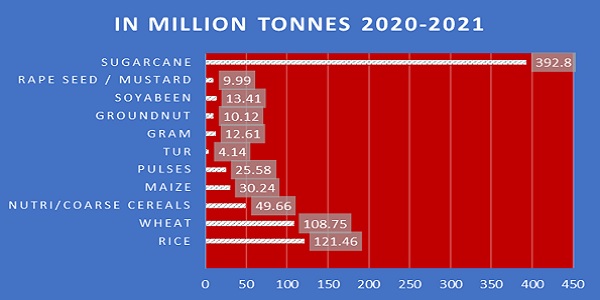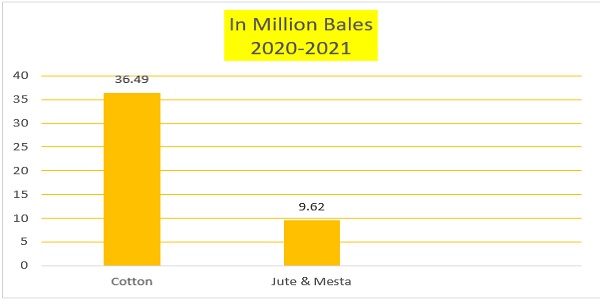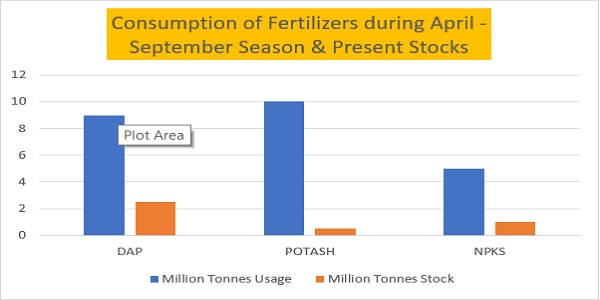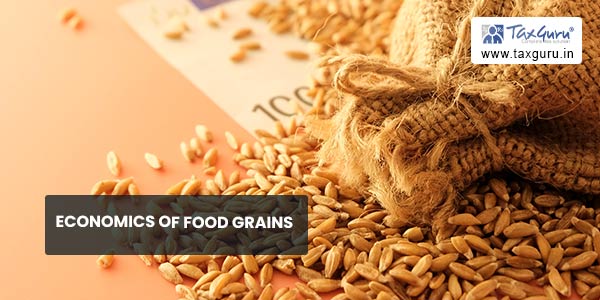Introduction:
During my college days in the late ’80s & Beginning of the ’90s, the Principal of our MGM college, Udupi Late Prof Rama Bhat who was also an Economics Professor always used to tell the significance of Two states namely Punjab & Undivided Andhra Pradesh also known alternatively as Granary Of India in filling the buffer stock of Foodgrains namely wheat & Rice which holds true even now, sometimes out of curiosity I visit the FPS which is there in our Neighborhood and I get astonished when I see the Huge stock of rice to be distributed through PDS, that’s the reason why our PM recently announced that if WTO gives permission we are able to feed the mouth of have nots in other parts of the world who are facing scarcity of food grains due to various reasons.
“We already have enough food for our people but our farmers seem to have made arrangements to feed the world. However, we have to work according to the laws of the world, so I don’t know when WTO will give permission and we can supply food to the world,”
Recently IMF also gave a good report to the Government of India on the way they handled food security during the pandemic. The extracts of the report are as below
The new IMF paper — Pandemic, Poverty, and Inequality: Evidence from India found that extreme poverty (with purchasing power parity of less than USD 1.9 per person per day) in India was less than 1% in 2019 and it remained constant even during the pandemic in 2020.
“PMGKAY was critical in preventing any increase in extreme poverty levels in India and the doubling of food entitlements worked substantially in terms of absorbing the Covid-induced income shocks on the poor,” the report stated.
Now let us come to the basic sowing season in India they are of Two types namely Rabi & Kharif and the agricultural crop year in India is from July to June. The Indian cropping season is classified into two main seasons-
1) Kharif is based on the monsoon Crops
2) Rabi is known as a winter crop.
The Kharif cropping season is from July to October during the Southwest monsoon which usually hits the Kerala state during the last week of May and the first week of June every year proceeding to other parts of the country and the Rabi cropping season is usually from October-March (winter crop basically). The crops grown between March and June are also known as summer crops. The terms ‘Kharif’ and ‘Rabi’ originate from the Arabic language where Kharif means autumn and Rabi means spring.
The Kharif crops include Rice, Maize, Sorghum, Pearl millet/ Bajra, Finger millet/ Ragi (cereals), Arhar (pulses), Soybean, and Groundnut (oilseeds), cotton, etc. The Rabi crops include wheat, barley, oats (cereals), Chickpea/gram (pulses), linseed, mustard (oilseeds), etc.
Now let us come to the total production of food grains from the last available data for the year 2020-2021 which is as follows

Also, the figures for Cotton and Jute are expressed in million bales with cotton having a weight of 170 Kgs & Jute having a weight of 180 kgs

With such excellent statistics, the present scenario is that there is a likelihood of a shortage of Fertilizers due to various geopolitical factors including the conflict between Russia with Ukraine and the unrealistic food inflation standing at an all-time high of 6.95 % for almost 17 months period ending March 2022. The main ingredients of fertilizers are phosphate and potash since the prices of the raw materials have gone up due to the conflict between Russia and Ukraine being one of the major suppliers in the international markets and disruptions in the supply due to the ongoing conflict the fertilizers companies are not importing the basic raw materials and the month of June 2022 will be arriving within the next 40 days when the time is ready for sowing and we are facing a shortage of fertilizers given the current availability and demand. The ratio of usage of fertilizers between Kharif and rabi season is 45:55 ratio overall.
As of now, we have enough stock of urea but the problem is that of DAP, MOP & NPK are in short supply and cause for worry for the coming monsoon season, and the experts in the fertilizers sector are hoping that the Government of India will support them appropriately to tide over the shortage crisis of the fertilizers.

In India, the government is expected to spend a record 1.55 trillion rupees ($20.64 billion) in subsidies to farmers and fertilizer firms this fiscal year to avoid shortages and keep prices affordable.
The problems of urea another day I was just having a meeting with one of my learned members of the institute and he told me how the people misuse the usage of urea by diverting to other places other than using the same as fertilizers and though the Government has come up with DBT and distribution of fertilizers almost like our PDS still there are many loopholes to be plugged for possible pilferage and misuse, as they do in PDS where the rice distributed through PDS for BPL cardholders in Karnataka, is polished and sold in Kerala / Tamil Nadu / Hoteliers at a higher price per kg after polishing the free rice through an organized syndicate which is basically wrong and once in a while you have a raid on clandestine rice mill but the rice lobby in Karnataka is too strong and the show is still going on.

Being Heavily-subsidized, urea is always prone to diversion for non-agricultural use like
To be used as a binder by plywood/particle board makers,
Cheap protein source by animal feed manufacturers
Rampantly used as an Adulterant by milk vendors
Apart from being smuggled to Neighboring Countries.
The scope for leakage was more in the earlier system, right from the point of dispatch till the retailer’s end. With Direct Benefit Transfer, pilferage happens only at the retailer level, as there is no subsidy payment till sales are made through POS machines and subject to the buyers’ biometric authentication similar to PDS where rations will be only after authentication by UIDAI .
Conclusion :
But looking at the current shortage of fertilizers I feel maybe we are moving forward for the adaptation of organic fertilizers which Sikkim has adopted, if that is the case then we have to really work very faster because organic manure takes a while before giving the results on the ground, green fertilizers are most welcome as they don’t come with potential collateral damage to the environment and we have to think of mother earth for the future generations of ours.





